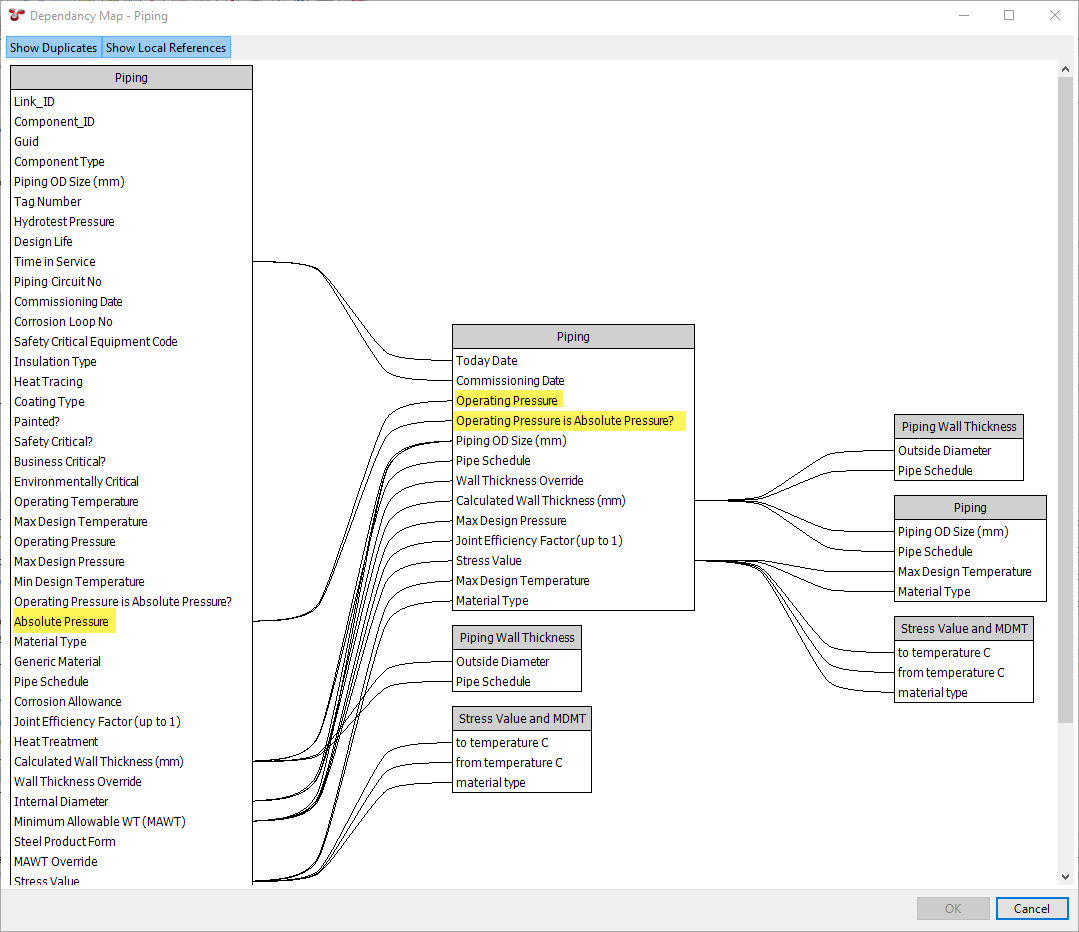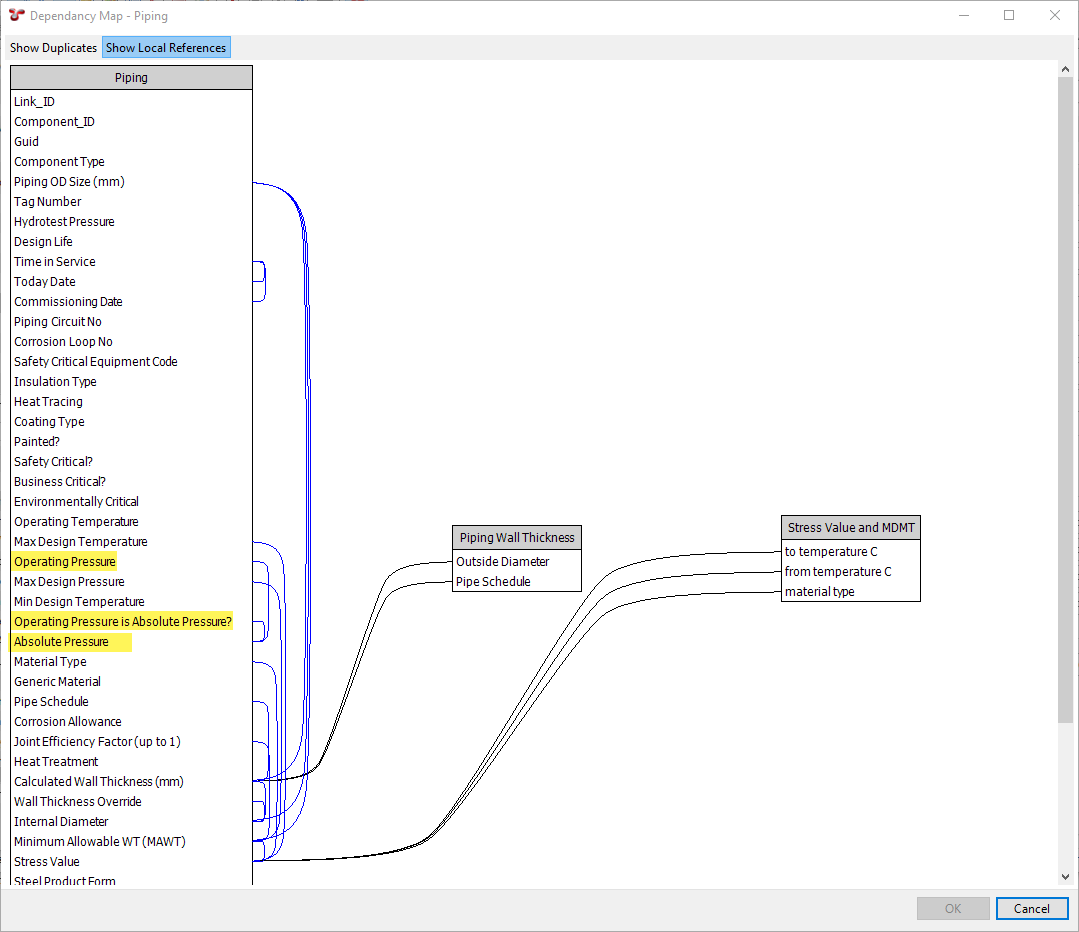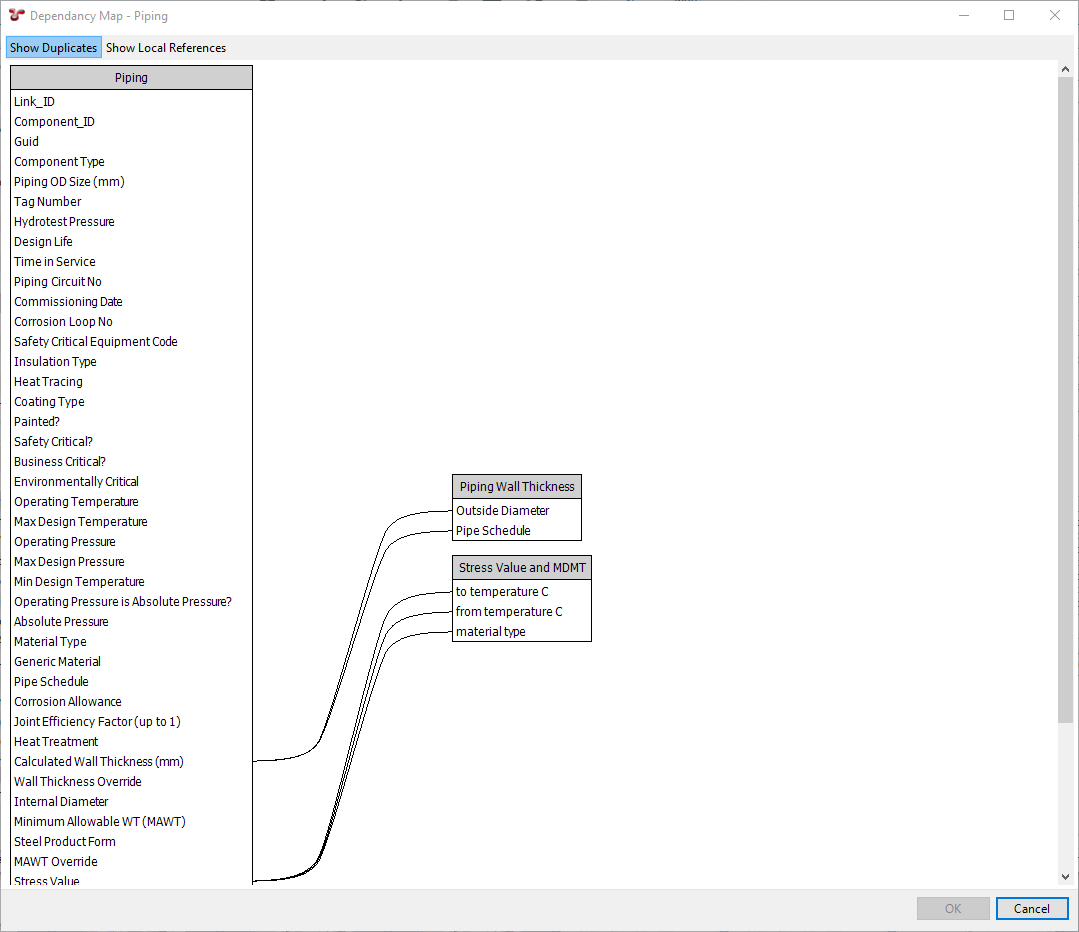Configure Event Types
Under , you can create and configure event forms. You can then use these forms to record event data.
You can create the following types of forms here:
Event Form Type |
Description |
|---|---|
Event |
Events represent a single point in time and space, or a short range of time and/or space. For example, a form to capture details about an anode’s current state would be an event. |
Sub Event |
A Sub Event appears within one of the other types of form, and can contain multiple records for a single instance of its owning form. For example, a CP Reading event form might have a sub event form on it for registering several readings; a Seabed Profile continuous event form might have a sub event form on it for recording a range of cross-profile depths. Sub Event types are not supported by IC-Inspector. |
Survey Data |
A Survey Data form captures information like location (Easting, Northing, and so on), KP, CP (for example, CP Reading, Field Gradient) and so on. Survey Data such as KP, Easting, Northing, Latitude, Longitude and Elevation is logged into a Survey Set. Each Event has a reference to a Survey Set. The positional data contained is retrieved from the Survey Set, matching on the Date Time Stamp in the Survey Set and the Date Time Stamp (Start Clock) of the event. Survey Set data is imported inherently with any Import Events. The inspection data import templates are formatted with the required columns. It is also possible to import Survey Set Data independent of event records. To edit individual survey data points, go to Configure Survey Sets. |
Continuous Event |
A Continuous Event is for capturing periodic data. For example, on a subsea pipeline inspection, you might capture seabed information every n metres. Continuous events do not normally appear in the Event Listing, unless you specifically filter for them. |
You can maintain event forms from the Configuration - Event Types dialog as follows:
In the top half of this dialog, you can add, edit and delete event forms. You can use the standard toolbar functions for maintaining the forms (see Using the Grid). In addition, you can:
Use the Field Order button to move a field up or down in the form or grid. For example, if you want to place a field between two other fields in the form, select Form … from the drop-down list, and in the Form Field Order dialog, you can move the field with the Move Up or Move Down buttons available in the toolbar.
Using the IC-Inspector… item under this button, you can also define the order of fields that appear on the Event Details screen in IC-Inspector.
Check the dependency map using the Map button (see View Dependency Map).
In the bottom half, you can add, edit or delete fields within the forms and use the standard toolbar functions for maintaining the fields within the forms (see Using the Grid). You can also review how fields appear in the form or grid layouts and set up workflow rules and anomaly triggers for specific fields in the form.
Create Event Forms
See the steps below for the basic process of creating a new event form:
Under , click Add at the top of the Configuration - Information dialog
.
Select the type of event form that you want to create
.
The Add Table Definition dialog appears. The title of the dialog reflects that form data is stored in tables in NEXUS IC.
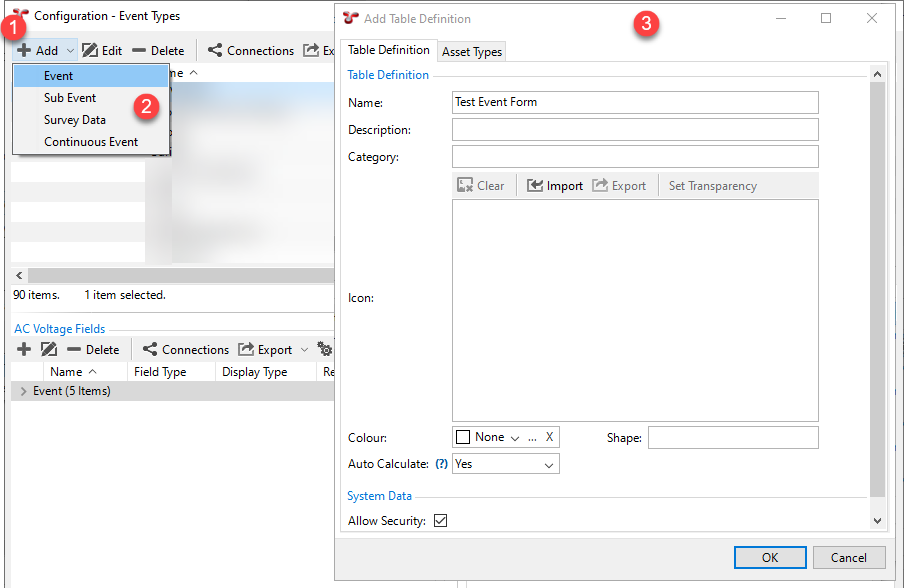
Specify the main table parameters in the Add Table Definition dialog
. For more information, see Add/Edit Table Definition Dialog.
Note
When you create the table for the first time, not all tabs are visible in the dialog. Save the table, select it and click Edit to return to the dialog with all the tabs visible.
Click OK.
Add new fields to the table by choosing Add from the bottom toolbar of the Configuration - Event Types dialog
.
The Add Field Definition dialog appears.
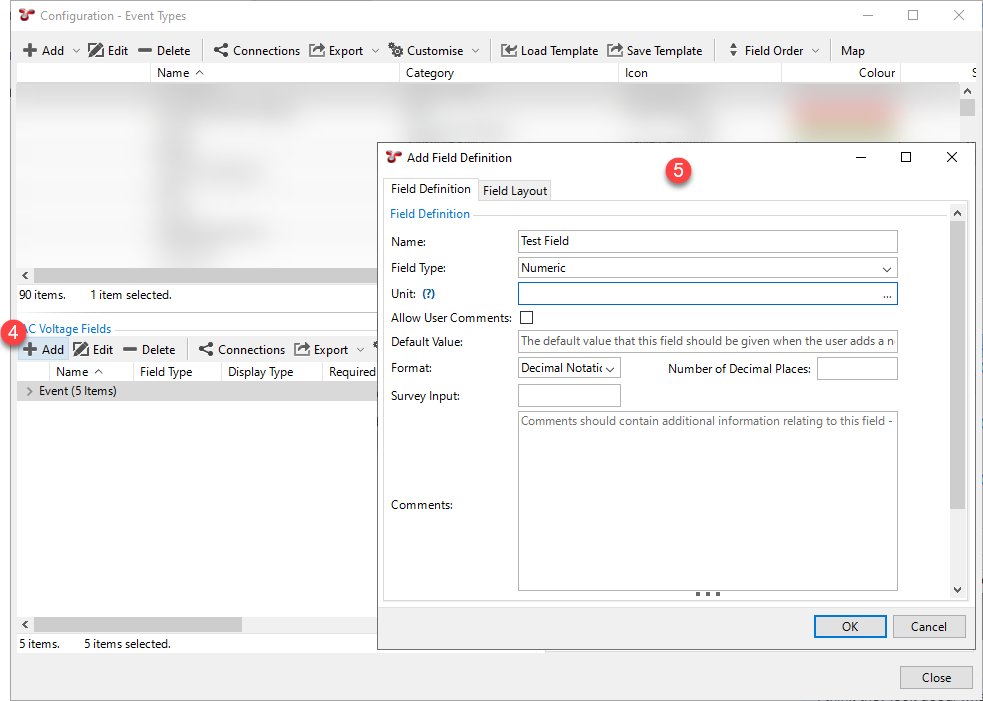
Note
When you create the field for the first time, not all tabs are visible in the dialog. Save the field, select it and click Edit to return to the dialog with all the tabs visible.
Specify the main field parameters in the Add/Edit Field Definition dialog
.
In this dialog, you can define the main properties of the field, configure its layout, assign functions, set up workflow rules and anomaly triggers, and so on. For more information, see Add/Edit Field Definition Dialog.
Click OK.
View Dependency Map
The dependency map is a visual representation of an Asset Information Group (AIG), Event Type’s, or global table’s dependencies.
You can access the dependency map by choosing Map in the toolbar of the configuration dialogs when configuring AIGs (see Configure Asset Information Groups), event types (see Configure Event Types) or global tables (see Configure Global Tables).
The map is represented as a series of interlinked fields grouped in columns, each column representing the AIG/Event Type/Global Table to which the fields belong.
The map is hierarchically arranged from left to right, with the target AIG/Event Type/Global Table located in the left-most column, and its dependencies and sub-dependencies located to the right.
You can also toggle the view using the following buttons at the top of the dialog:
Show Duplicates: If this button is switched on, and a field has a reference to another field in the same AIG/Event Type/Global Table, the field and the AIG/Event Type/Global Table will be displayed again in a separate column. If you switch this button off, the fields will be displayed only once and any self-referential dependencies will be displayed as a closed loop in a single column. For example, if you have a field called Absolute Pressure in the Piping AIG, which has references to two other fields from the same Piping AIG, the dependency map is displayed as follows:
Show Local References: If this button is switched on, and a field has a reference to another field within the same AIG/Event Type/Global Table, this dependency will be displayed on the map. If you switch this button off, these self-referential dependencies will not be displayed at all. See how the example mentioned above is displayed when toggling this button on or off:
See also

